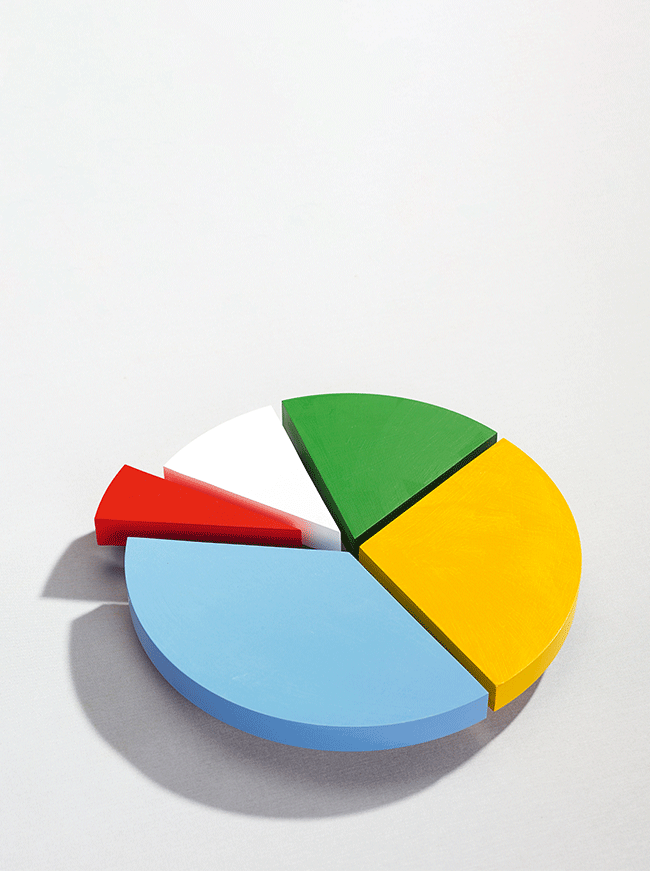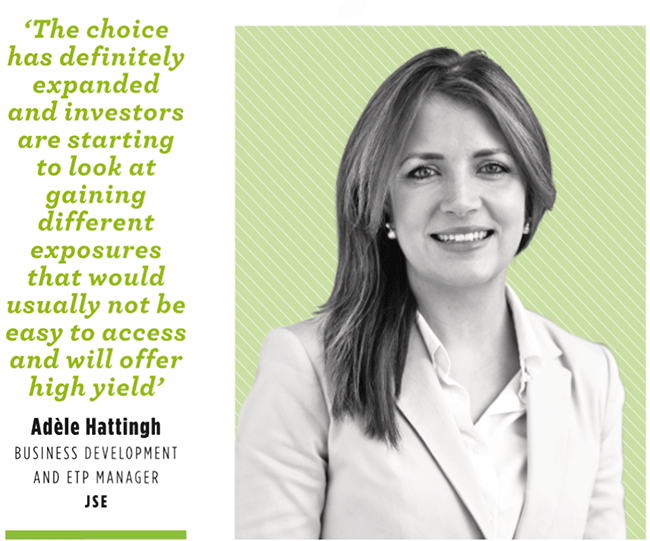‘At the time of the first ETF listing, on 27 November 2000, the ETF market capitalisation was slightly below R3 billion. As at end September 2020, that figure is a healthy R106 429 706 023.49,’ says Adèle Hattingh, JSE Business Development and Exchange Traded Products Manager.
Since then the market has realised a CAGR of roughly 20%. ‘There are now 78 ETFs, offering various asset class exposures, while trading a daily average of close to R600 million, and reflecting an industry with a market capitalisation of over R106 billion.’
The introduction of the first ETF listing wasn’t only unique – considering the initial shareholding arrangement with the likes of Gensec Bank, Corpcapital Bank and JSE each holding a third in Satrix Managers – but it was also one of the biggest IPOs at the time. This ownership structure later changed to a joint ownership of Satrix between Deutsche Bank and Sanlam Capital Markets, until Sanlam took full ownership.
Hattingh explains that fairly early on, investors were offered exposure to both local and global traditional equity ETFs, together with precious metals. ‘ETF investment strategies then shifted from traditional broad-based equity market indices to include exposure to other asset class indices.
‘Gradually “smart beta” was introduced, testing the notion of ETFs being simply passive, where index construction is based on rules-based investment decisions. This meant that investment multi-factors influenced the composition of the basket of constituents in a dynamic manner, as opposed to index construction being based on market capitalisation,’ she says.
2017 was a catalyst year, given the release of a South African Reserve Bank circular that permitted locally registered collective investment scheme ETF issuers unlimited offshore exposure, therefore removing offshore limits for offshore funds.
‘That year saw 15 foreign-exposure ETFs listing on the JSE. This year alone, we’ve listed five new ETFs including, but not limited to, the first China-focused ETF, the Satrix MSCI China ETF, the Satrix Global Aggregate Bond ETF and our first ESG-focused ETFs, the Satrix MSCI EM ESG Enhanced ETF and the Satrix MSCI World ESG Enhanced ETF,’ she says.
Hattingh predicts that growth prospects for the local ETF market are promising, adding that as the market becomes more aware of the multiple benefits and uses of ETFs, greater demand will follow. ‘Over time, we’ve seen a variety of different asset classes – local and global – and various index methodologies introduced. The choice has definitely expanded and investors are starting to look at gaining different exposures that would usually not be easy to access and will offer high yield.’
Hattingh also mentions ongoing global trends that include the continued growth of fixed-income active ETFs and, more recently, the introduction of non-transparent active ETFs in the US market. ‘Factor investing or “smart beta” still remains topical, particularly as investors search for risk-control strategies during these volatile times.’
With the onset of COVID-19, international investors have started looking at exposure to biotech sectors, work-from-home ETFs, technology sector-specific exposure, and online gaming. Yet interest in safe-haven assets such as gold remains paramount as investors look for certainty.
Environmental, social and governance (ESG)-focused strategies are expected to be the fastest-growing investment segment within ETFs, globally. ‘According to etfGI, an independent research and consultancy firm, assets invested in ESG ETFs and ETPs listed globally broke through the $100 billion milestone in end-July 2020,’ says Hattingh.
‘This is an incredible achievement, considering that the ESG ETP market was just over $20 billion in [assets under management] two years before. A single investment product like an ETF that incorporates ESG factors is not only significantly convenient, but completely transparent.
‘Investment philosophies are morphing beyond the “passive versus active” debate, to how they may be blended. Conversations and inevitable actions are forcing investors to consider the long-term sustainability effects of their investment decisions,’ says Hattingh. ‘ETFs respond to all these factors and more.’









